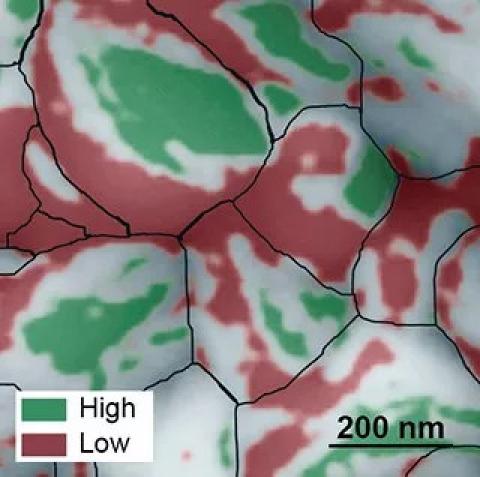A multidisciplinary team at Berkeley Lab, both from the Molecular Foundry and the Joint Center for Artificial Photosynthesis, found a possible way to dramatically boost the efficiency of methylammonium lead iodide perovskite solar cells. The team discovered a surprising characteristic of a perovskite solar cell that could be exploited for higher efficiencies, possibly up to 31%.

Using photoconductive atomic force microscopy with nanometer-scale resolution, the scientists mapped two properties on the active layer of the solar cell that relate to its photovoltaic efficiency. The maps revealed a bumpy surface composed of grains about 200 nanometers in length. Each grain has multi-angled facets. Unexpectedly, the scientists discovered a big difference in energy conversion efficiency between facets on individual grains. They found poorly performing facets adjacent to highly efficient facets, with some facets approaching the material's theoretical energy conversion limit. The scientists say these top-performing facets could hold the secret to highly efficient solar cells if the material can be synthesized so that only very efficient facets develop.

